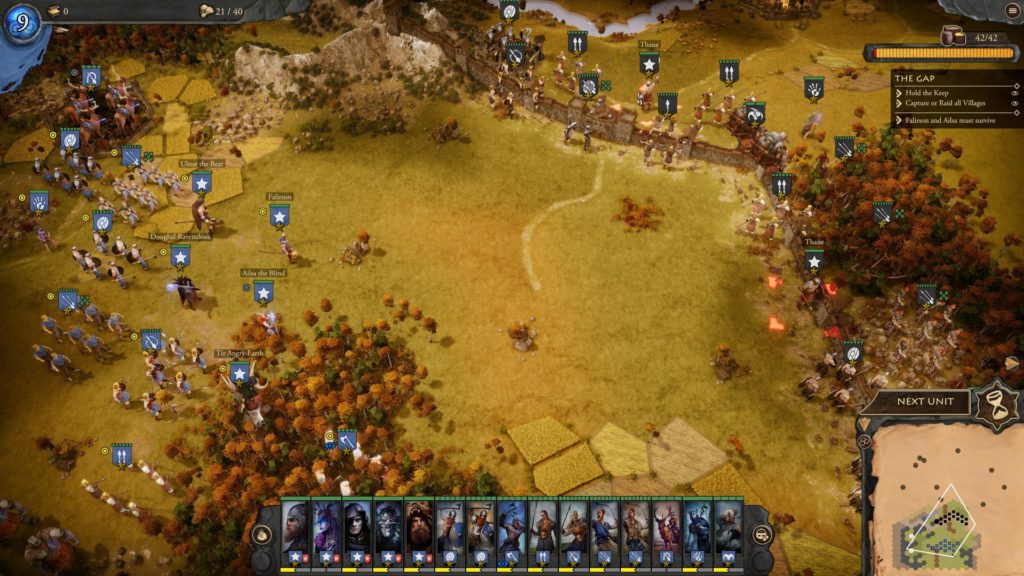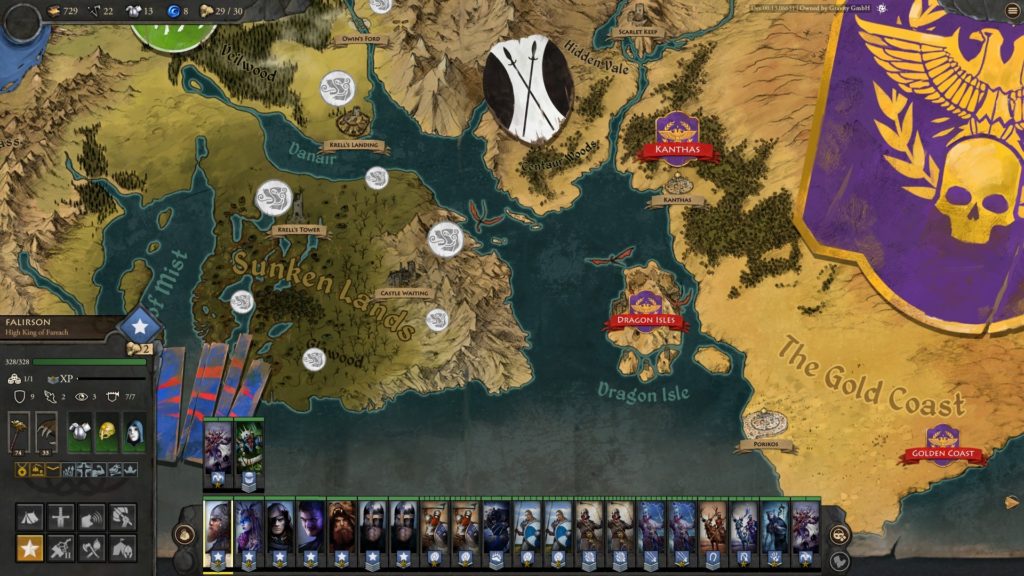Fantasy General II (PC)
 One can see the influence of the original Fantasy General in the popular Fire Emblem franchise. However, Fantasy General (and Fantasy General II) maintain the focus of the game on the main commander, with the majority of supporting units changing and growing over time, but without all the interpersonal interactions. This sequel maintains the original Fantasy General style and substance but updates it for modern sensibilities and computer architecture. If Fire Emblem feels like trying to manage a somewhat unruly bunch of tweens and you’d rather play a game focused on actual combat and unit growth, Fantasy General II may be the game for you.
One can see the influence of the original Fantasy General in the popular Fire Emblem franchise. However, Fantasy General (and Fantasy General II) maintain the focus of the game on the main commander, with the majority of supporting units changing and growing over time, but without all the interpersonal interactions. This sequel maintains the original Fantasy General style and substance but updates it for modern sensibilities and computer architecture. If Fire Emblem feels like trying to manage a somewhat unruly bunch of tweens and you’d rather play a game focused on actual combat and unit growth, Fantasy General II may be the game for you.
Once upon a time there was Panzer General. The year was 1994 and the company SSI was still in its heyday of producing some of the best strategy games around. Panzer General was yet another turn-based, WWII wargame played out on with units on a hex grid. It has everything expected of wargames of its time: many unit types, fog of war, multiple maps and scenarios. What is brought to the table was a smooth, accessible gameplay and a unique campaign mode.
Players were able to go through a series of linked scenarios, with good performances in one opening up better options in the next. Even more significant, individual units would gain experience over the course of a battle, which would continue on to the next battle. These ongoing units, supplemented occasionally by non-continuing forces, formed the backbone of one’s troops. In addition to simply gaining in strength (and/or morale, etc…) They could eventually be upgraded into improved units (typically from later in the war.) Losing these units (or even having them seriously hurt – they would heal back up but the “new recruits” would lower the experience level of the troops again) would significantly hurt one’s long-term performance. Succeeding battles often required a certain amount of prestige to continue, which then dictated one’s follow-up opportunities. The game hit a nerve with gamers and was extremely popular among the wargaming crowd with the campaign mode also attracting more casual players through its almost RPG type of quality. Playing exceptionally well as the Germans in the campaign allowed players to attack Moscow or Britain, and go so far as to make an attack at the Washington DC itself.
Panzer General inspired many sequels, Allied General (where you played the Allies), Pacific General, Star General (sci-fi), Fantasy General (fantasy) and Panzer General II (which significantly updated the graphics and display.) However, it was Fantasy General that left the biggest mark for me. I still have the box sitting on my shelf of ancient game boxes (filled with the classic huge game manuals full of strategic information.) Something about crashing together fantasy armies of slingers chucking rocks at pegasi riders really caught my imagination. It was in Fantasy General where I felt the upgrade program really shone. You could pick a leader in a campaign which gave advantages to all units of a specific type (ranged, infantry, mounted, etc…) Here, the units were small groups or even individuals, rather than the battalion-sized units of the original game. This made maintaining and upgrading one’s troops even more personal.

Well, after many years, Fantasy General is back. The new Fantasy General II is much of what one would expect of the game. The same turn-based hex-tiled battlefields fought out by one’s increasingly battle-hardened groups. The new game (currently) has only one main campaign (with 33 missions, though), starring the son of one faction looking to stand out amongst the many other factions on the map. Players begin with only a few basic units and must work their way through increasingly more difficult scenarios, requiring solid tactics but also good pre-planning. It’s been awhile since I played the original, so I’m not sure what all is new, but it seems like there are more ways to upgrade one’s units.

Heroes and other units gain experience over time, but players also obtain resources through capturing locations on the map and performing well in battle. Players must then manage both their gold (money) as well as weapon and magic resources that can be used to upgrade units for later battles. Units typically have an upgrade “tree” where one must decide what upgrades to pursue. For example, a unit might upgrade into mounted spearmen, armored spearmen (with shields), or even a sort of ranger/ninja type of unit capable of sneaking around on the map. Eventually one can even get further upgraded units that have magical attacks, which ignore armor and just beat down on the enemy morale.
Verdict:
Fantasy General is far back in the past so there’s plenty of nostalgia to go around. However, Fantasy General II captures much of what I remember enjoying. With just a single campaign (there is still a skirmish mode), it feels like it doesn’t have as many ongoing options as before. This is too bad, since following and upgrading troops through linked scenarios is one of my favorite parts of the game. However, I do hope to see additional campaign options to show up at a later date. (It seems to me to be something that wouldn’t be incredibly hard to do – depending on how much story they want to put into it…) Is it right for you? Gamers looking for a meaty turn-based strategy game that focuses just on the battles (vs a Civ-version where you also build up an economy) will find much to like here. Obviously, if you crave realism, this isn’t the theme for you. However, if you’re nostalgic for the original or know you’re in the target audience for some turn-based battles, Fantasy General II should serve you well.
Kid Factor
This is a strategy game, so a gamer is going to need some long-term planning abilities. There is a fair bit of text, both in the unit information and background, and in the story mode. While there is death a-plenty, it is all abstracted at the unit level. However, there are the standard fantasy tropes of good guys and bad guys who dabble a bit too far into the dark-magic side of things. It should be accessible and fairly appropriate for most strategy-oriented tweens.





Discussion Area - Leave a Comment